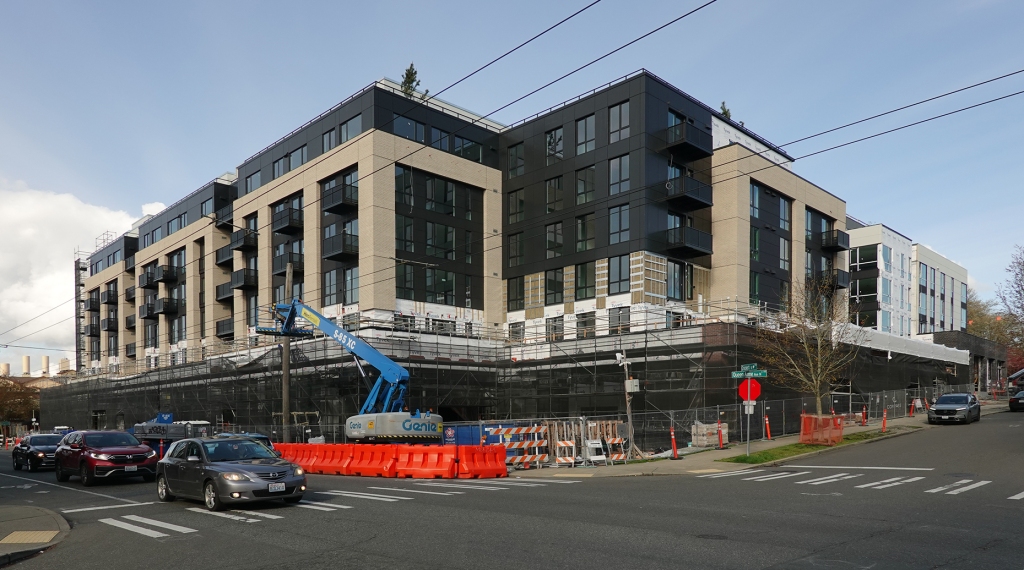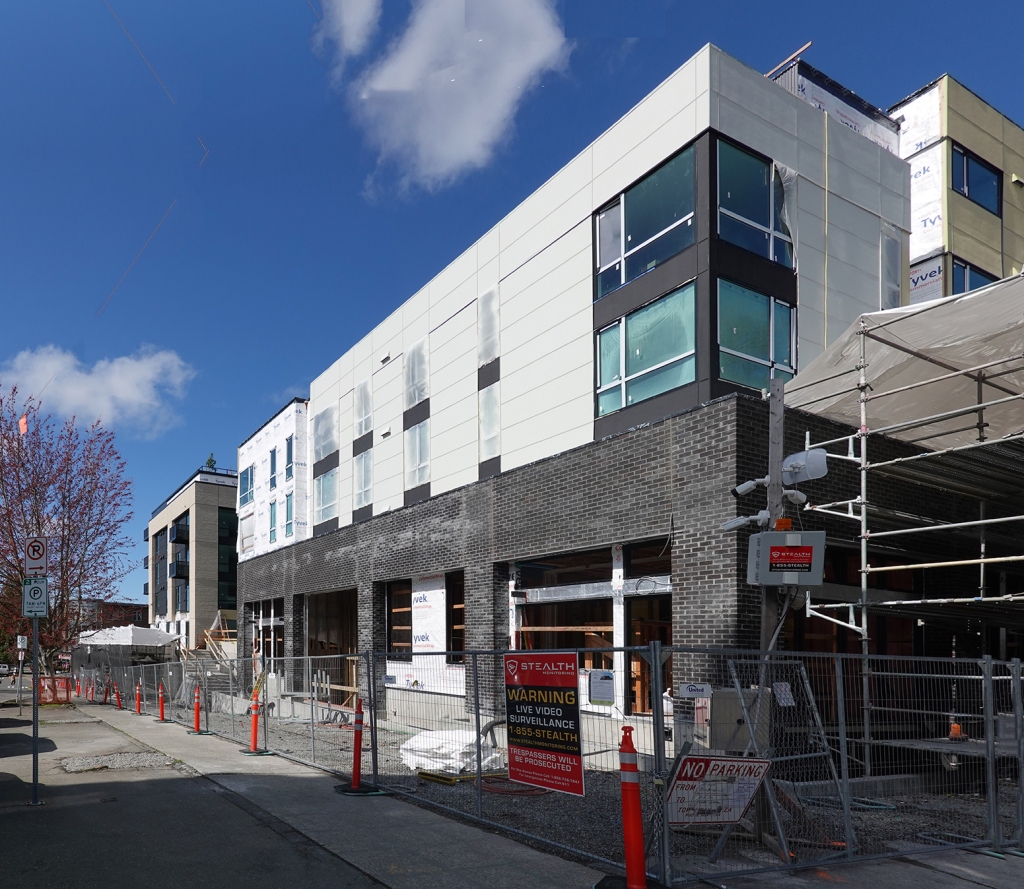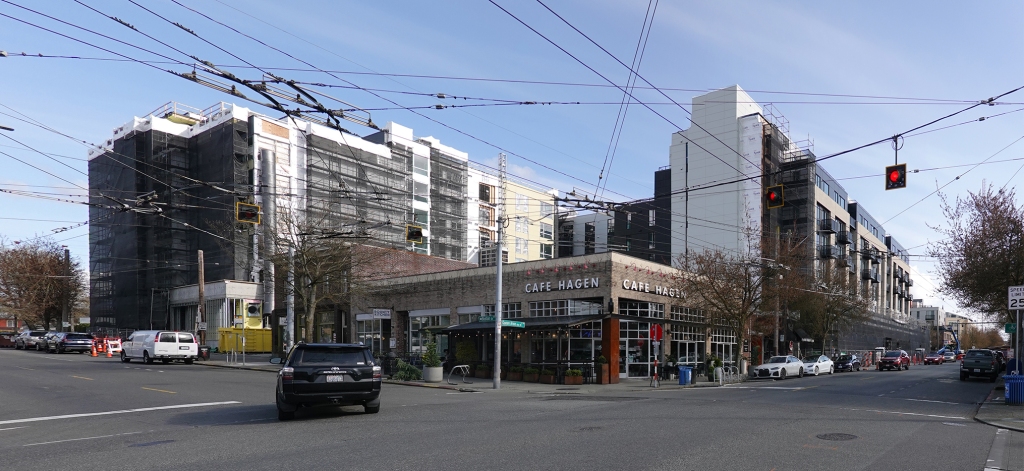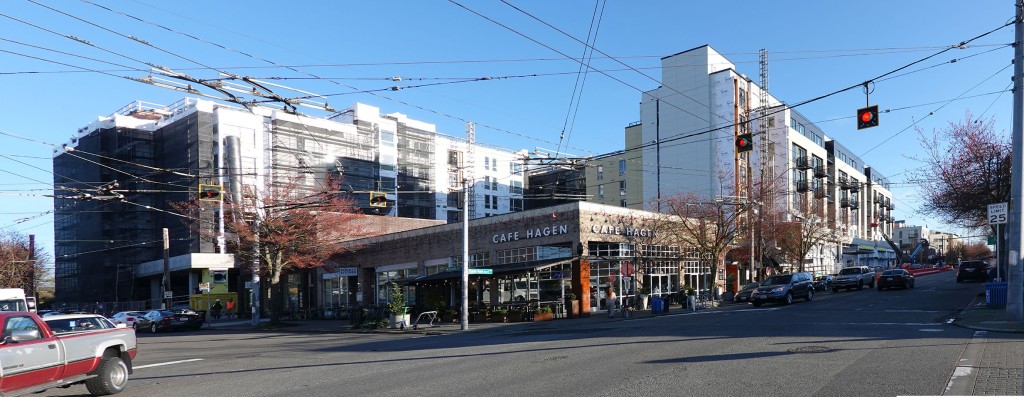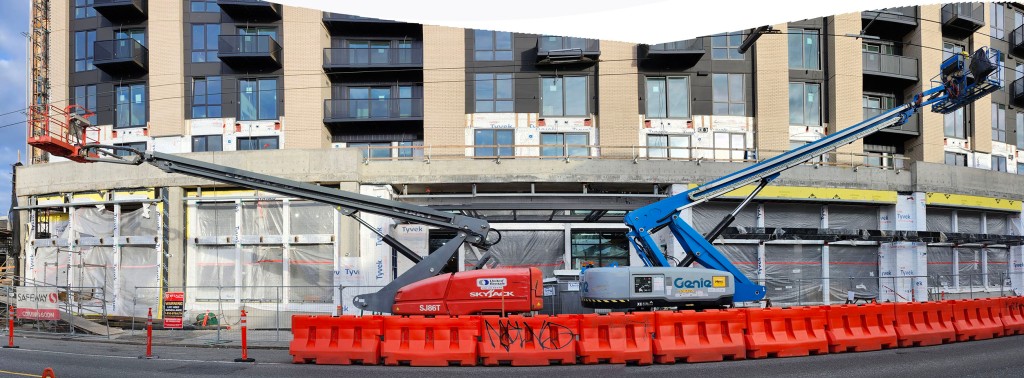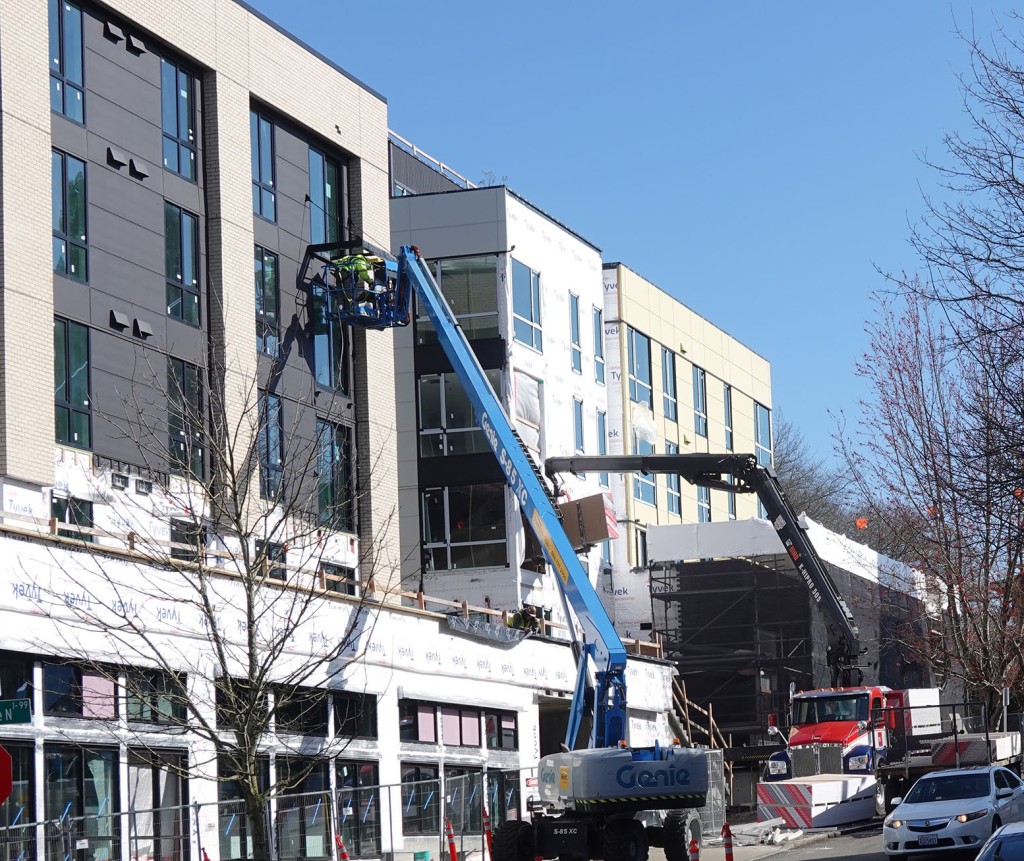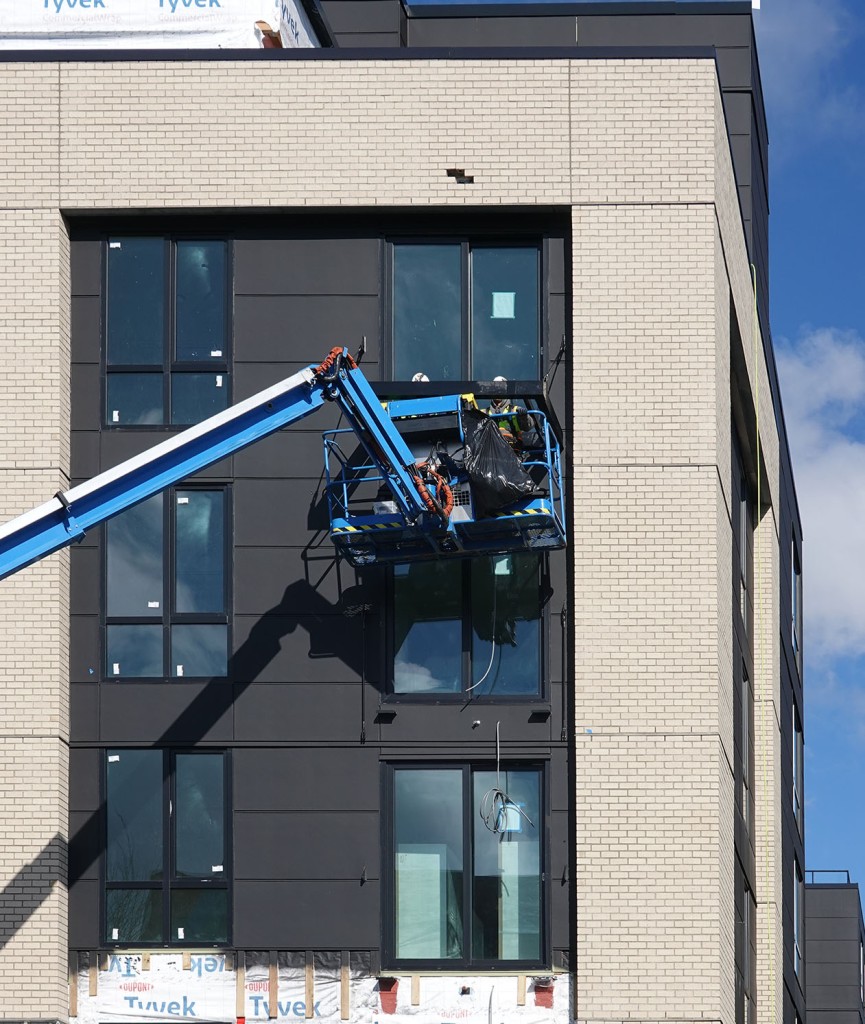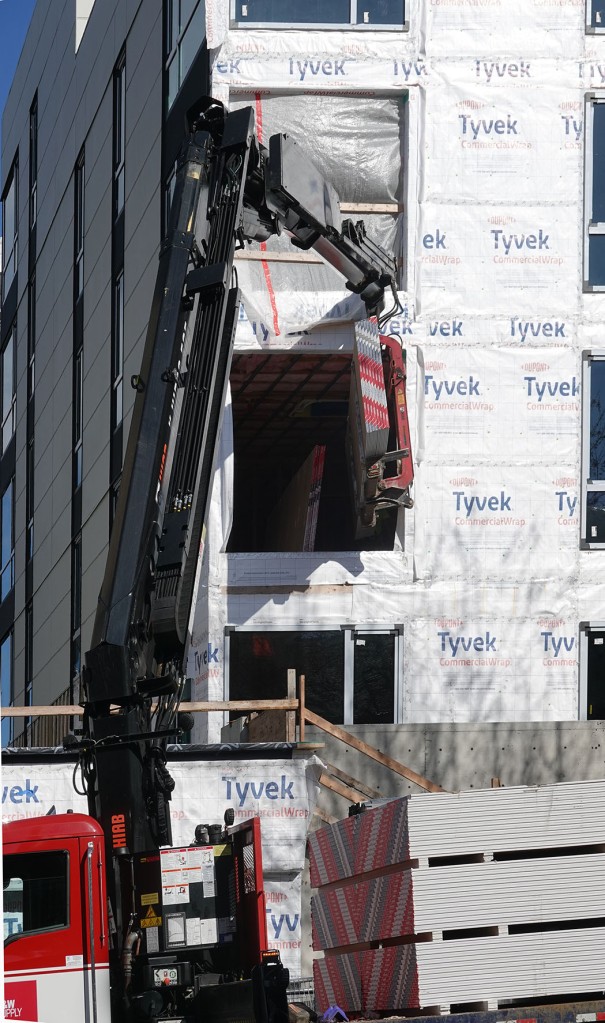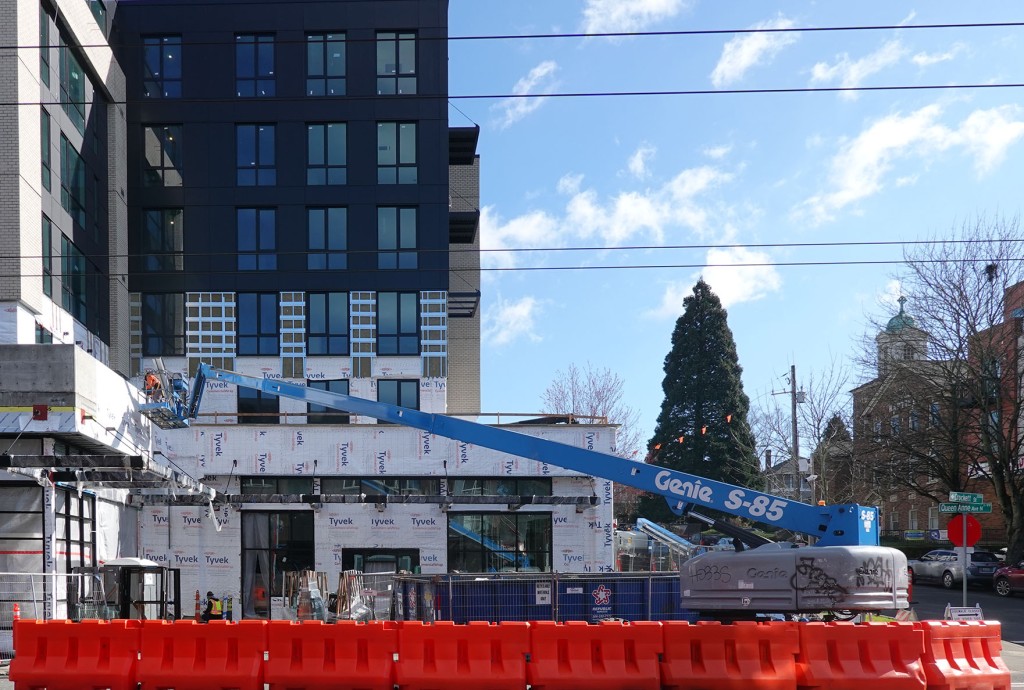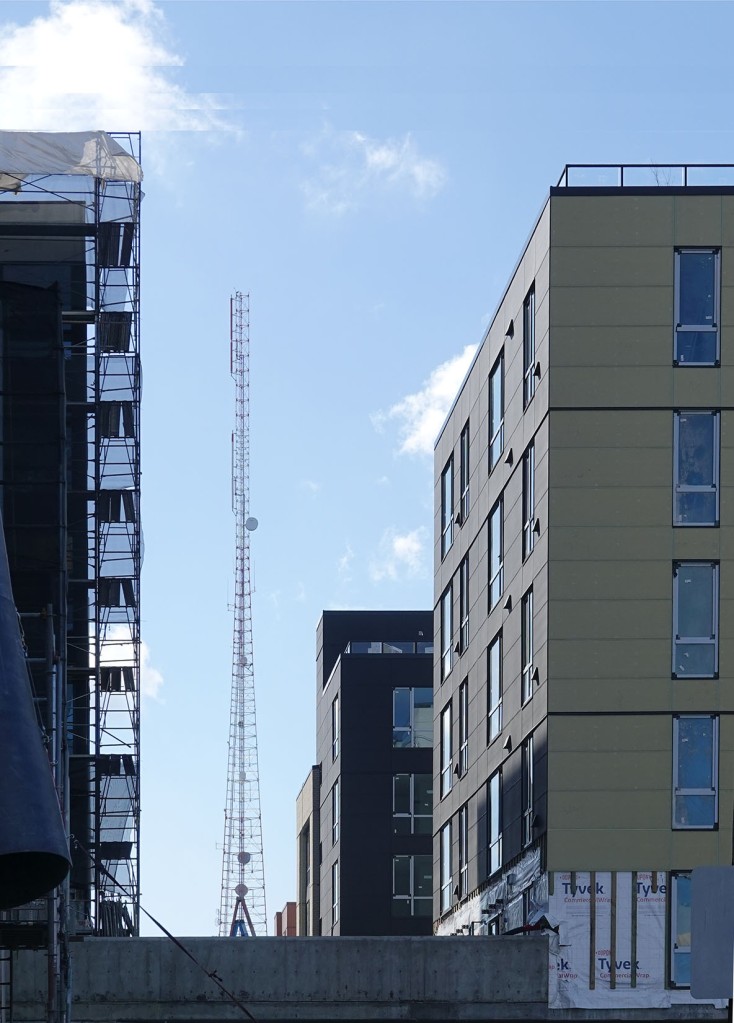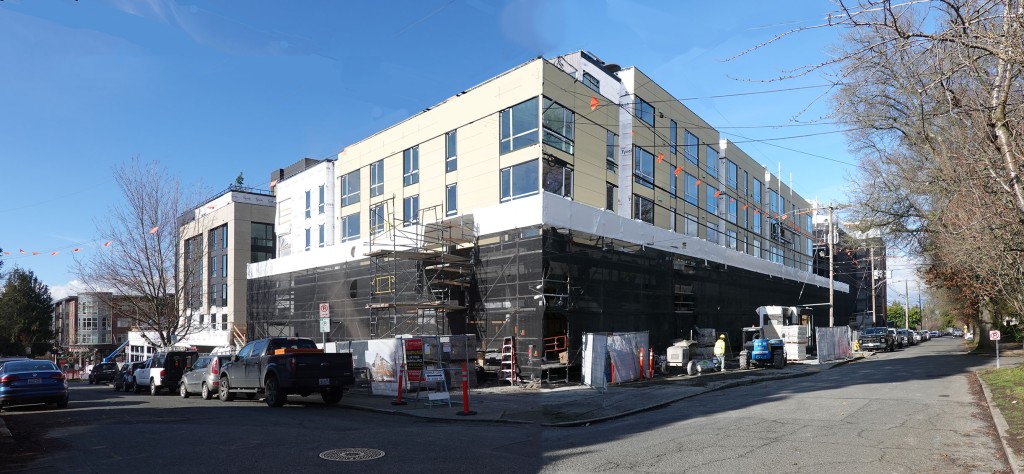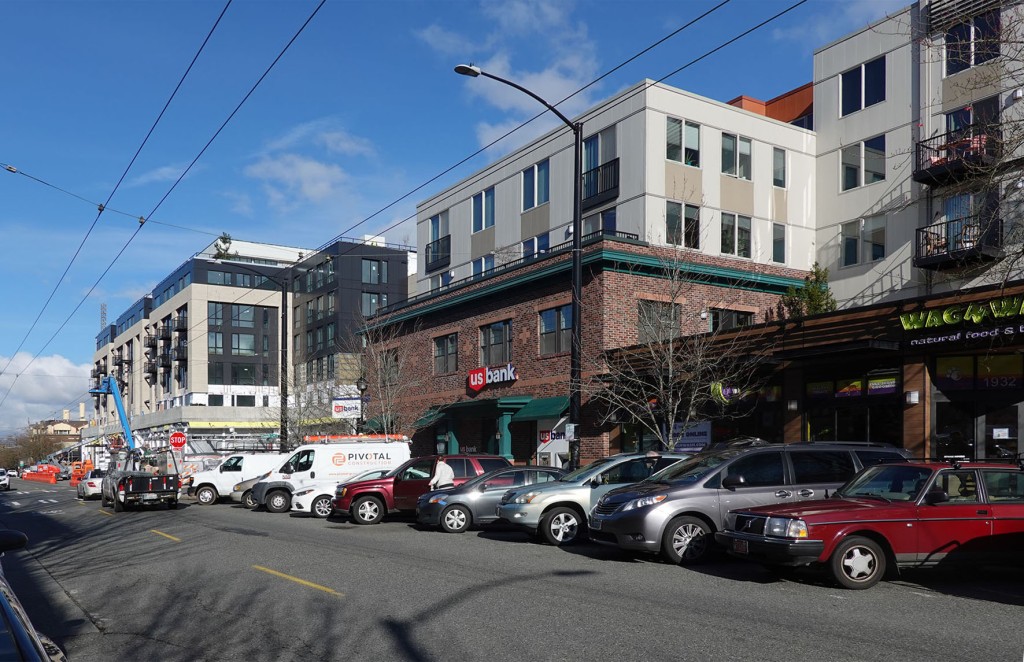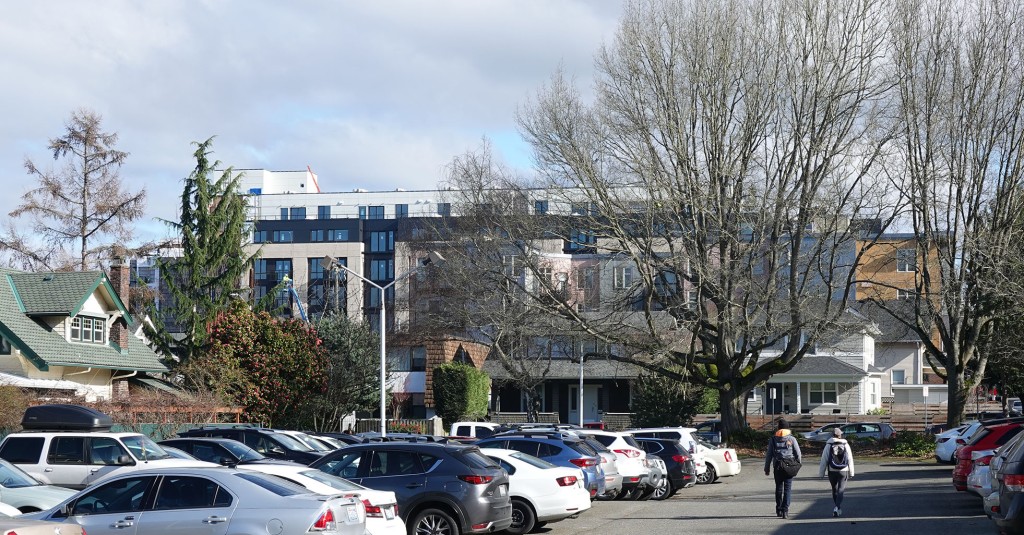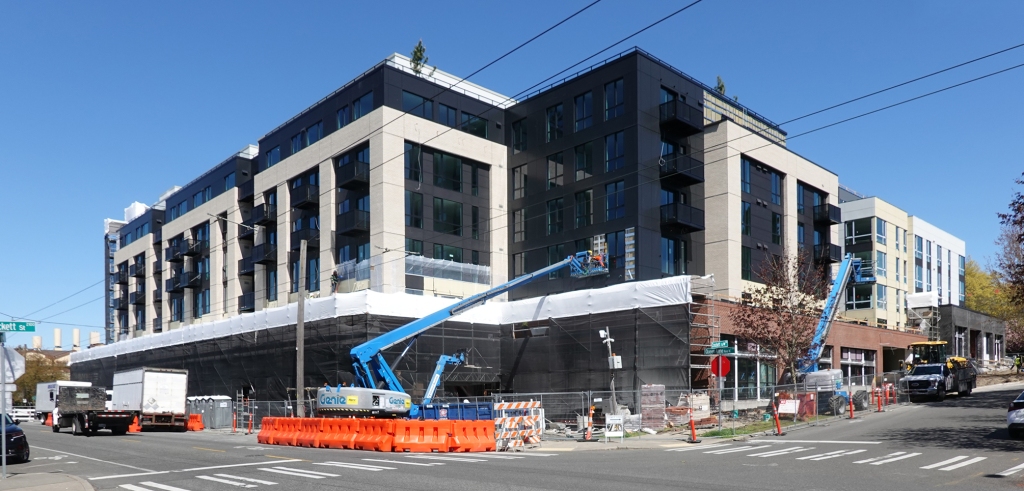
As more and more of the perimeter scaffolding comes down, more and different portions of the building’s facades have been revealed. What’s not always clear is what the ‘look’ of the various facades tells us about the building. I thought it might be interesting to look at some. Shortly after the photo above, the scaffolding in front of the future deli / plaza was removed.

As is quite obvious, the facade of the Deli is made of red brick. In fact, one of the messages of the facade is that when you see red brick, it will indicate that retail is located there, basically for the Safeway and its components. Here’s the Deli elevation:
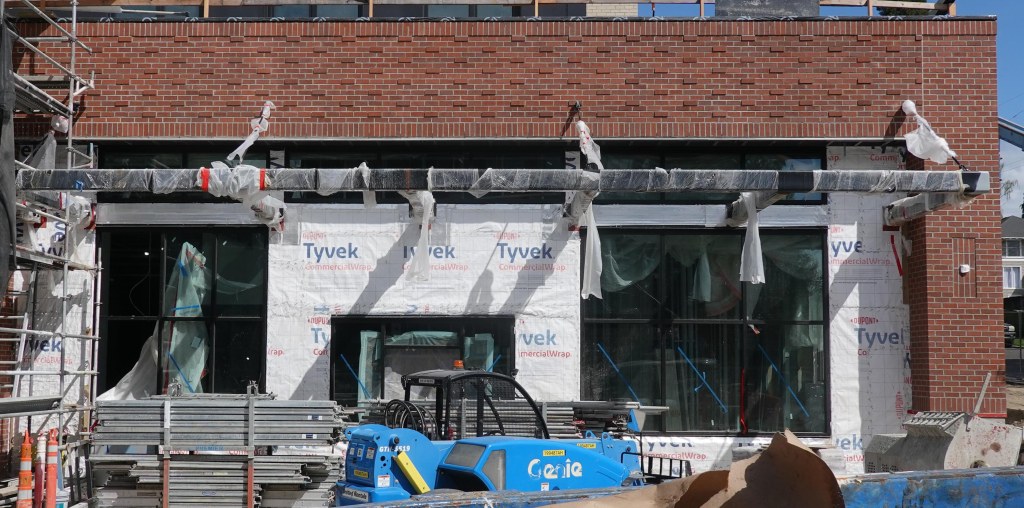
It will have view windows on either side with a service window in the center where you can order and receive food for take-out or for eating in the plaza. The brickwork also tells another story when the shadows reveal the pattern.

Some of the bricks have been set slightly out from the face of the wall so that they are accentuated by the sun-shadows. This tells a story (the Deli is a special place) by borrowing the look of an older construction technique. In original brick construction the walls were built two or three bricks thick because one brick was not strong enough. To make the wall work structurally the thicknesses had to be tied together. This was done by turning a brick sideways every so often so that it created a bridge between the outer and inner layers. Typically these were called header bricks. Over the years, masons in different areas spaced the headers in interesting patterns, the one above being similar to Flemish Bond with three stretchers (the bricks between each pair of headers). What’s actually going on in this modern version is that there is a concrete structure behind one layer of brick with an airspace and sheet flashing between them. Metal lintel angles at the bottom and ties occasionally behind, work to support the brick and hold it in place.
Old meets new – nice touch.
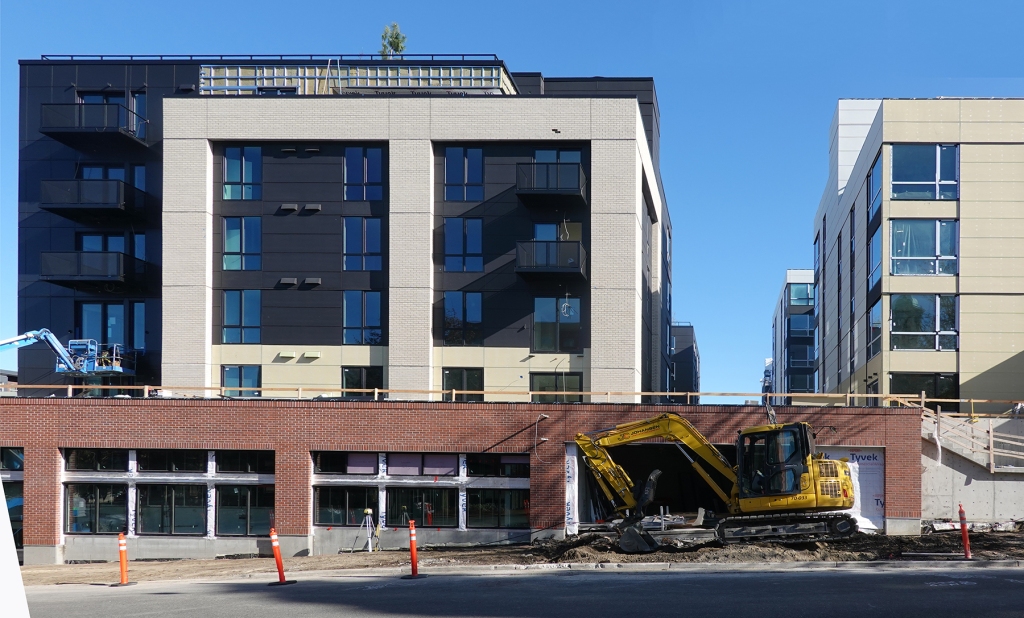
Around the corner, on Crockett Street, the brick facade continues – to reference the Safeway, and it’s also used to frame the automobile entrance to the store garage. No special brick patterns here, though. Above the brick are the multiple levels of housing where several visual devices are in play. As you may remember from the construction process, the housing is built up of layers (floors) of prefabricated wooden wall elements, brought in by truck, lifted by the tower crane, and anchored in place, a floor at a time. The design dilemma is that if all that wood were left as is, it would be hard to distinguish the various parts of the three buildings and the overall effect would also be massive. So the design developed several ‘languages’ to give different parts of the buildings different looks. This also helps to give some scale to the building forms. In the picture above left, you’re looking at the south end of Building C which is essentially black with white “frames” overlaid for scale. But across the ‘alley gap’ to the right the treatment differs.

Here, Building B is mostly white with black floor-level spandrels; but it’s fronted by one-story “townhouse apartments” which are enclosed by black brick. You can see the units more clearly around the corner on First Avenue (below).

The distinction in these units is that they each have their own ‘stoop’ entrance directly out through landscaping to First Avenue. I lived in a row house in Philadelphia. It will be interesting to see how these compare.
The treatment shown in the two pictures above continues down First Avenue where there’s a gap with skybridge hallways connecting it to Building A. At that point a totally different corrugated facade material has been introduced on the extension of Building A.

I like the corrugation but it does introduce a lot of black. Building A is still partly scaffolded but the overall impression is clear.

Building A is distinguished by its top and bottom. The top floor has some social gathering space and the bottom contains the Leasing and Management offices, visitor reception, tenant mail boxes, etc. Its west side is just coming into view below.

Ducking into the future service drive, you can see the juncture of corners of the three buildings and the different “languages” of their facades: A / B / C.

Stepping back a bit at Queen Anne Avenue and Boston Street gives the big picture.

And just in the time we’ve taken to walk around the project more of the red brick has been revealed at the retail level. When the scaffolding along the Queen Anne Avenue sidewalk comes down, the entire retail level will be recognizable.

One final note about the language of the facade: the Queen Anne Avenue side.
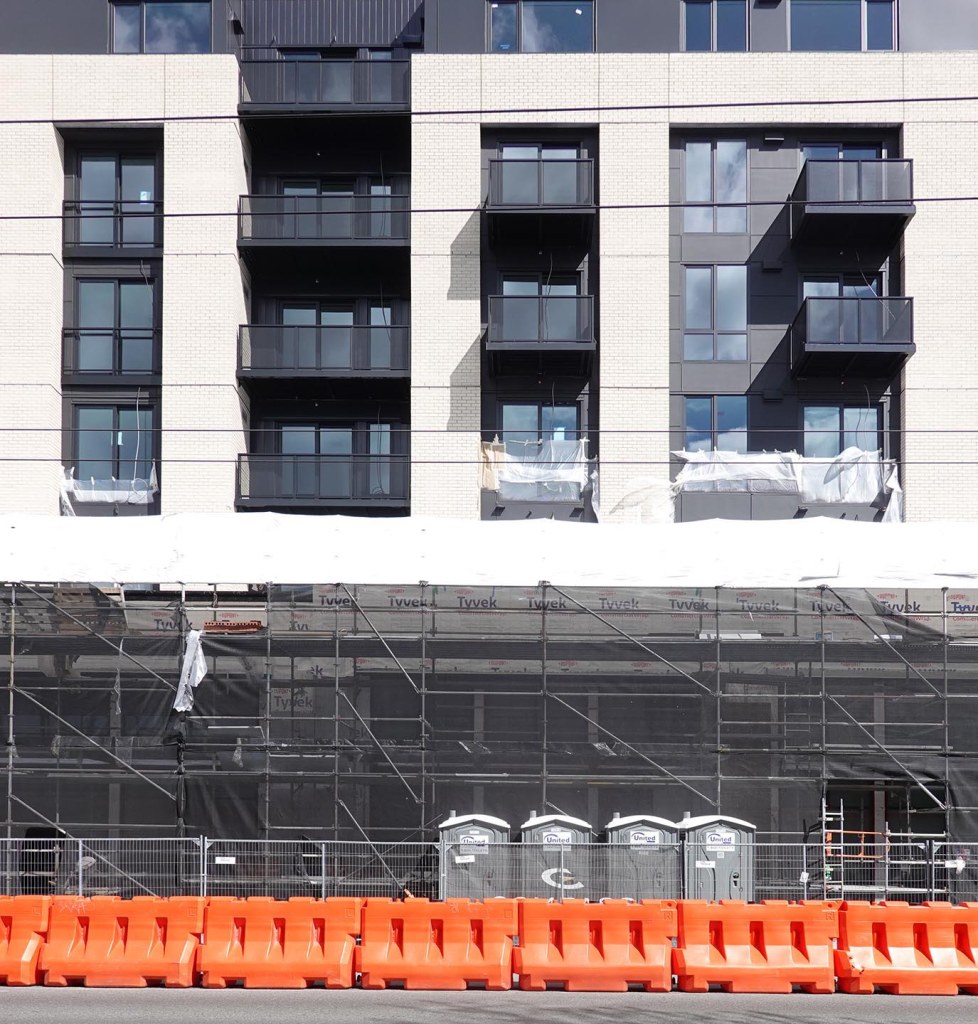
Here the “Big Frames” approach has been used to visually articulate the facade and help to moderate its bulk. These frames plus the extended balconies and stepped-back upper floors all work to help a very big building fit into its urban village neighborhood.

